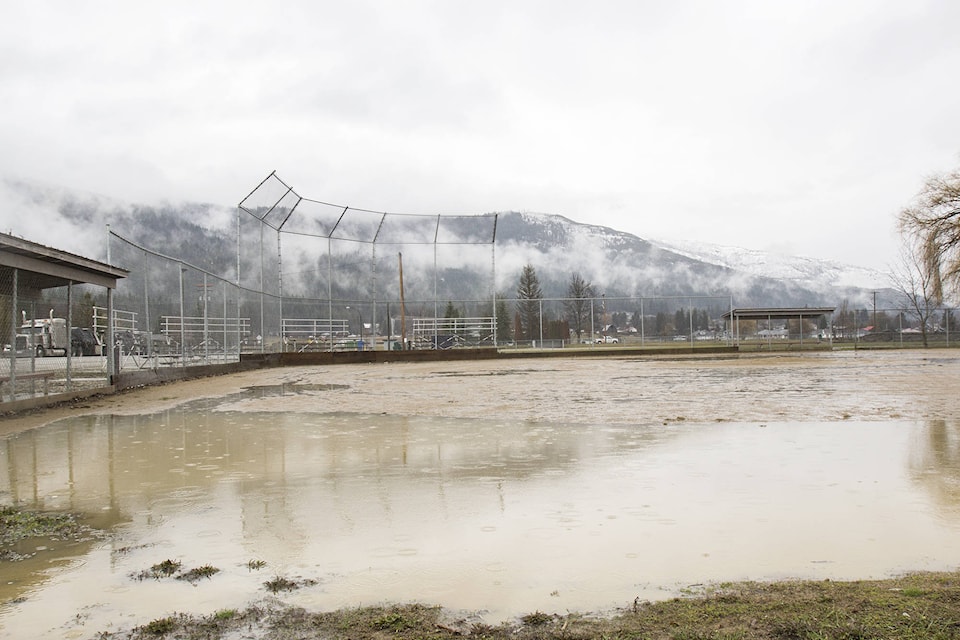The long, wet winter Salmon Arm endured has left much of the city in a soggy state, including the parks and sports fields enjoyed in the community. As a result, several sports fields and public spaces such as parks have seen a delay in opening to the public and offering their full range of usual services.
Despite lingering feelings of cabin fever that make these spaces particularly desirable now that spring has technically come, the city’s parks and recreation department would like to remind residents that use of these spaces before they are ready only contributes to further delays.
“Definitely, we’re way behind. I would say we are at least three weeks behind, just because of the snowfall amount,” says Jason Chernhoff, supervisor of parks and recreation. “It’s just the way it is. We can’t do anything about mother nature, its unfortunate, there is a lot of eager people out there but there are some strict guidelines we go by before opening a field.”
The Little Mountain Sports Complex and Blackburn Park are among the fields most affected by the current conditions. The parks and recreation department cannot confirm an opening date for the affected fields, as ongoing weather conditions could heavily impact their timeline.
In addition, Tim Kubash, turf supervisor of the Salmon Arm Golf Club, says their courses are 7-10 days behind schedule in terms of opening to the public, with an unofficial target of April 27 as the opening date. Kubash notes that eight feet of snow accumulated on some of their courses over the winter, beating the previous record by over a foot.
While on the surface a field or park may seem ready-for-use once the initial snow-melt has disappeared, underneath the grass is a different, much soggier, story. Without extended periods of 10 degree temperatures the root systems are still undeveloped in turf and the soil underneath is likely retaining moisture, leading to fragile, easily-damaged turf.
“There is no root growth happening right now, it has to be 10-12 degrees soil temperature before anything starts working, and unfortunately we don’t have those temperatures, not even close yet,” Chernhoff says. “Otherwise they are running on dead soil, that is what they don’t want! That creates a disaster, if there is 60, 70, even 30 kids out there and everything is wet, it just turns to mush.”
Because these spaces are used by so many in the community, unnecessary damage caused by early use creates a cycle of ongoing maintenance that can last the entire season.
“Unfortunately if we get off to a bad start and the fields are damaged right off the get go, you’ll have it for the whole season,” Chernhoff says. “Then you know everything is behind, the growing, the upkeep, we have to fertilize more, we have to do more maintenance.”
And, Chernhoff notes, there is a lot that goes into getting parks and sports fields ready for public use that goes beyond simply waiting for spring to start. Turf that sees heavy traffic requires special preparation and conditioning to withstand a lot of walking, running and intense sports action.
“Every field gets the same treatment, we thatch the fields as soon as they’re ready to go on with a tractor, we go both ways, then we collect that thatch and all of it comes off the field. Then we aerate the fields in two directions, and then we do divot repair and seeding, then we over-seed, and then hopefully we’re on our mowing schedule and it’s all good for use.”
@Jodi_Brak117
jodi.brak@saobserver.net
Like us on Facebook and follow us on Twitter.
